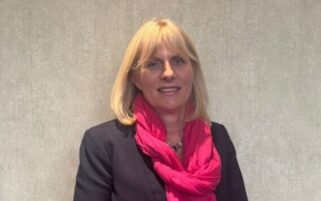ERNIE TURNER
CA
Director
BDO, Healthcare Services Group, Glasgow
Ernie heads up the Healthcare Services Group at BDO, which specialises in the provision of accounting, taxation and advisory services to the medical profession. In his spare time, Ernie enjoys holidaying in France, gardening, DIY, clay-pigeon shooting and football
It has been a difficult year for most practice managers as they struggle to balance the books after a financial annus horribilis in which there has been little or no new money on the table. Next year will no doubt be harder. Following the general election, with all political parties indicating cuts in public spending and possible increased taxation, the few years ahead seem certain to continue to be tough.
So, what can we do? It’s fine to talk about maximising income and controlling expenses, and I am sure most practice managers already do their best in this area. However, if there is no “new” money, expenditure will continue to rise, which will squeeze and further reduce practice profits.
The real problem is trying to explain the position to the partners. After all, it is their profits that are being reduced, and a smaller cake means a smaller slice for each partner. This is not something that partners want to hear but it is something they really need to understand.
The best way forward is to produce your budget for 2010/11 based on your current expectations for the year ahead. This can be done on a simple spreadsheet, which will allow you to make changes and see the impact they have on the bottom line. It also acts as a focal point for discussion with the GPs as it will let them see how much profit is available for them.
Look at the resources within the practice. Are these being put to the best use, or could they be better employed to produce more revenue? As staff costs form the largest outgoing in most practices, it is important to discuss and explain the position to staff in order to manage their expectations.
Budget to cash flow
Cash is obviously the prime concern of any practice. Most want to avoid a situation where the bank is overdrawn, incurring more charges and interest or, worse still, resulting in payments being bounced!
By using the basics of the budget, a cash-flow forecast can be drawn up with regard to the timing of various sources of income from the health board or primary care trust (PCT) as well as other external sources, such as private fees and reports, university/hospital appointments, etc. The expected amounts should be entered under the month in which you anticipate the income to be received.
Expenditure should also be included under the months in which you expect it to be paid. Some bills and costs are paid monthly (such as salaries and PAYE) while others (such as telephone, heating, lighting and rent) may be paid every month, every two months or quarterly. Don’t forget annual amounts set up by direct debit.
Entering the opening bank balance in the first month and adjusting this each month for the surplus/deficit will show you the anticipated monthly closing bank balance, which hopefully will be in credit. If it is not, then at least you will be aware of what is going to happen and will be in a position to take steps to reduce it. If you can’t reduce it, then you will need to contact the bank in order to arrange an overdraft facility!
Partners’ drawings
One of the things to consider is the partners’ drawings and if these have been set at the correct levels. As partners are the last to get paid, adequate funds must be available for them. Incorporate the projected partners’ drawings, including tax payments if appropriate, into the cash flow as an expense or outflow of funds, and this will then impact on the closing monthly balance.
There are two main ways used to calculate partners’ drawings.
The first is to look at the expected closing bank balance on a monthly basis. After deducting an amount as a provision for known bills due to be paid, the remaining balance is calculated, divided between the partners and paid to them. Clearly, the amount paid will vary greatly from month to month.
The second method is to agree a fixed monthly amount for each of the partners, perhaps based on last year’s profits. The monthly amount will be higher for fulltime partners and less for part-time partners.
I much prefer the second method, as once the figures have been agreed the same amount is paid out every month, which makes it easier for the GPs to manage their own affairs. It is also a lot easier for the practice manager, as it takes away the hassle of trying to calculate how much the partners are due at the end of each month!
Remember that these cheques are payments to account of the partners’ profit. Any surplus profits, as shown in the final partnership accounts, can be withdrawn, provided sufficient funds are available. The practice accountant will advise you on this.
The problem with both methods of calculating the drawings is that neither takes into account superannuation, which is deducted by the health board/PCT before funds are paid into the bank. When arriving at a fixed monthly amount using the second method, you would need to consider how much superannuation was being paid for each partner.
This may change in April after the health board/PCT has processed the Certificates of Net NHS Superannuable Profits. These are required to be completed and submitted by February to allow any under/overpayment to be adjusted in the March statement.
If the partners prefer their drawings to be calculated on a monthly basis, a simple adjustment can ensure that they are paid a more accurate figure. Once you have arrived at the sum you are going to pay out between the partners, this should then be increased by the superannuation deducted on behalf of all the partners. This total amount is then divided into profit shares. Each partner’s share is subsequently reduced by their proportion of the superannuation contribution.
It is essential that this adjustment to drawings is made. There are different tier levels and rates of superannuation ranging from 5% to 8.5%, which are deducted and paid on each partner’s behalf. Some partners may be making additional contributions to boot.
As these superannuation payments are effectively another slice from the available partnership profits, they are treated in the accounts in a similar manner to the partners’ drawings. Both are deducted from the partner’s “capital account”, which is detailed in the partnership accounts.
These specify the partners’ share of profits from which their drawings and superannuation are deducted. If these exceed the profit share then the capital account could become overdrawn. This means that the GP owes the practice money.
If the projected cash flow shows that the bank balance is becoming too low or overdrawn, the partners need to reconsider their level of drawings, as this indicates that they are taking too much out of the practice.
Practice accounts – capital accounts
Once the practice accounts have been completed, it is important that you meet with the practice accountant and go over them with him or her. Apart from the detailed information in the profit and loss account, the balance sheet also shows the assets and liabilities that the practice has at the end of the financial year, as well as the partners’ capital accounts, which reflect each partner’s share of these assets. These will change over a period of time and it is important that these are discussed in detail with both the partners and the accountant.
If the partners share profits equally then they should contribute or leave in their capital accounts similar sums. If the capital accounts are different, then following discussions they should be equalised down or up to a figure that is required to provide the necessary working capital for the practice. Broadly speaking, working capital is the money required to be left in the practice to allow the practice manager to pay the various bills.
Income received by the partnership in connection with external appointments is often subject to tax deducted at source. It is important that this income is grossed up for the tax and national insurance deducted, as it is the gross amount due to be paid to all of the partners.
The partner who carried out the work then has his drawings increased by the tax deducted at source. The reason for this is that a P60 will be issued in his or her name, which will show the tax deducted in the tax year. Relief on this will be provided on completion of the partner’s tax return.
Summary
Of course, practice managers need to oversee many areas, and I note below some points that may be of assistance:
- Make best use of practice resources to maximise income.
- Prepare a budget that will allow you to monitor sources of income and expenditure to act as a focal point for discussion with your GPs.
- Consider a cash-flow forecast that will highlight availability of funds and help to identify/avoid future problems.
- Revisit levels of partners’ drawings and agree to reduction where practice profits have fallen.
- Increased levels of superannuation contributions due by partners will reduce cash flow available, and could impact on the level of partners’ drawings.
- Reduced practice profit could mean reduction in tax payable by partners. If so, payments on account could be reduced to help cash flow. Watch for tax changes following the general election. Speak to practice accountants for guidance.
- Look at partners’ capital accounts and equalise on an annual basis with regard to the partnership accounts. Remember to consider any large transactions after the accounting date – eg, capital withdrawals need to be taken into account when arriving at any subsequent payments.



